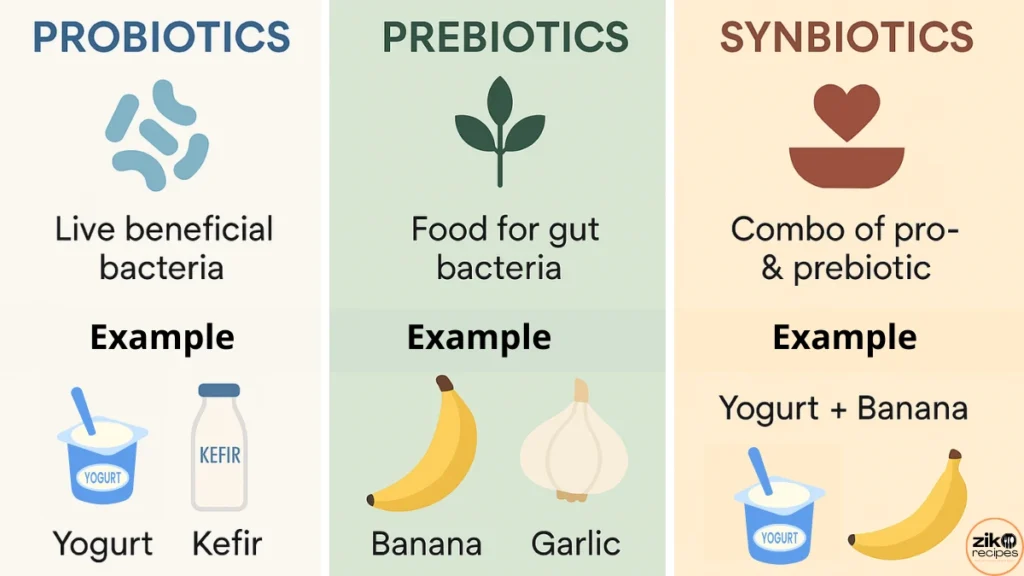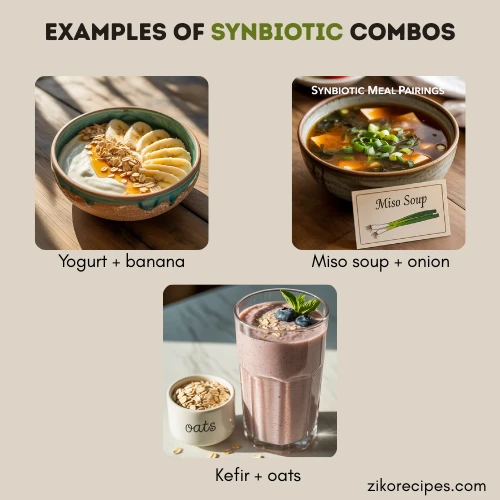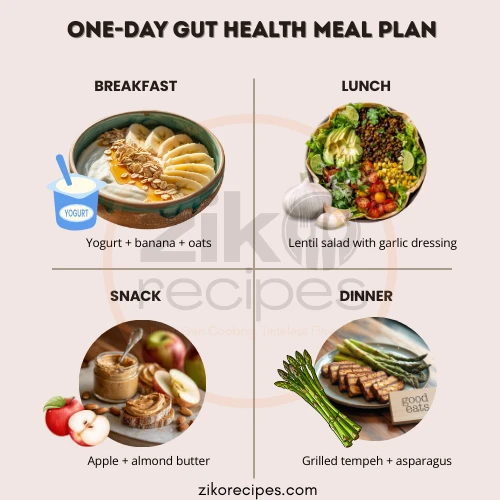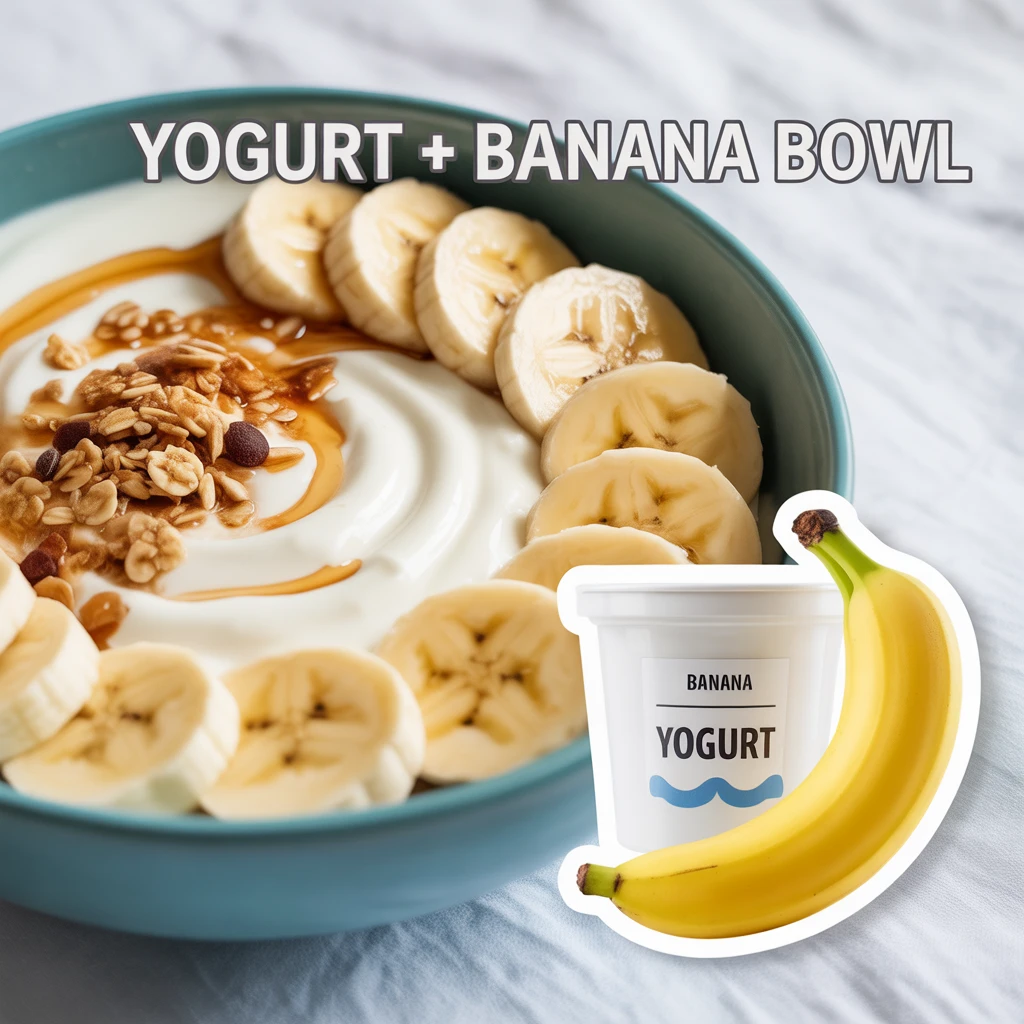Probiotics vs. Prebiotics: What You Really Need to Know for Gut Health
Most people have heard of probiotics and prebiotics, but knowing how they actually work for your gut can be confusing. As someone who’s worked closely with dietitians and gut health experts, I’ve seen how small changes can make a big difference in how you feel day to day. This guide breaks it all down in plain English.
Quick Summary: What’s the Difference?
- Probiotics: Live bacteria that support your gut.
- Prebiotics: Food for the good bacteria already in your gut.
- Synbiotics: Foods or supplements that combine both.

What Are Probiotics?
These are live, beneficial bacteria found in certain foods. They help balance your gut microbiota, improve digestion, and may support your immune system.
Common Probiotic Foods:
- Yogurt with live cultures
- Kefir
- Sauerkraut
- Kimchi
- Miso
- Tempeh
What Are Prebiotics?
Prebiotics are types of fiber that your body can’t digest, but your gut bacteria love. They help the good bacteria grow and do their job better.
Common Prebiotic Foods:
- Bananas
- Onions
- Garlic
- Asparagus
- Leeks
- Oats
Should You Take a Supplement?
Getting probiotics and prebiotics from food is best, but supplements can help in some cases.
Tips for Choosing a Supplement:
- Look for 10 billion+ CFUs
- Choose a variety of strains (Lactobacillus, Bifidobacterium)
- Check for third-party testing
- Look for clear labeling with strain names
Synbiotics: The Best of Both Worlds
Some foods naturally have both prebiotics and probiotics, or you can pair them in meals.

Examples of Synbiotic Combos:
- Yogurt + banana
- Miso soup + onion
- Kefir + oats
Sample Gut-Friendly Meal Plan

Breakfast: Yogurt with banana and oats
Lunch: Lentil salad with garlic dressing
Snack: Apple with nut butter
Dinner: Grilled tempeh with roasted asparagus
FAQs:
Yes, taking prebiotics and probiotics together can be very beneficial. Prebiotics feed the good bacteria in your gut, while probiotics add more of those beneficial bacteria. When paired, they work synergistically to support digestion, immune health, and gut balance. This combo is called a synbiotic.
Common signs you may need more prebiotics include:
– Bloating or irregular digestion
– Low energy or frequent fatigue
– Poor immune response
– Cravings for sugar or processed food
– Trouble with regular bowel movements
Adding prebiotic-rich foods like oats, bananas, and garlic can help.
Prebiotics may help reduce bloating over time by feeding healthy gut bacteria and improving digestion. While they don’t directly flatten your stomach, they support a healthier gut, which can reduce discomfort, gas, and puffiness.
There’s no single magic fix, but fiber-rich prebiotics are essential for healing the gut. Foods like garlic, leeks, onions, and oats help feed beneficial bacteria. Adding fermented foods like yogurt or kefir also supports balance. Staying consistent with these foods is key.
– Probiotics are live good bacteria found in foods like yogurt and kimchi.
– Prebiotics are fibers that feed those bacteria, found in foods like garlic and bananas.
Both are important, probiotics add to your gut, prebiotics help them grow.
Final Thoughts
You don’t need fancy products to support your gut, just real food and a bit of know-how. Add one new probiotic and one prebiotic food to your week. Notice how your digestion and energy feel.
Want better gut health? Start small and keep it simple.
Tried any of these gut-friendly tips? Share your meals with us on Pinterest, Instagram, and Facebook and and use #GutGoals.






1 thought on “Probiotics and Prebiotics Explained Simple Food-Based Gut Guide”